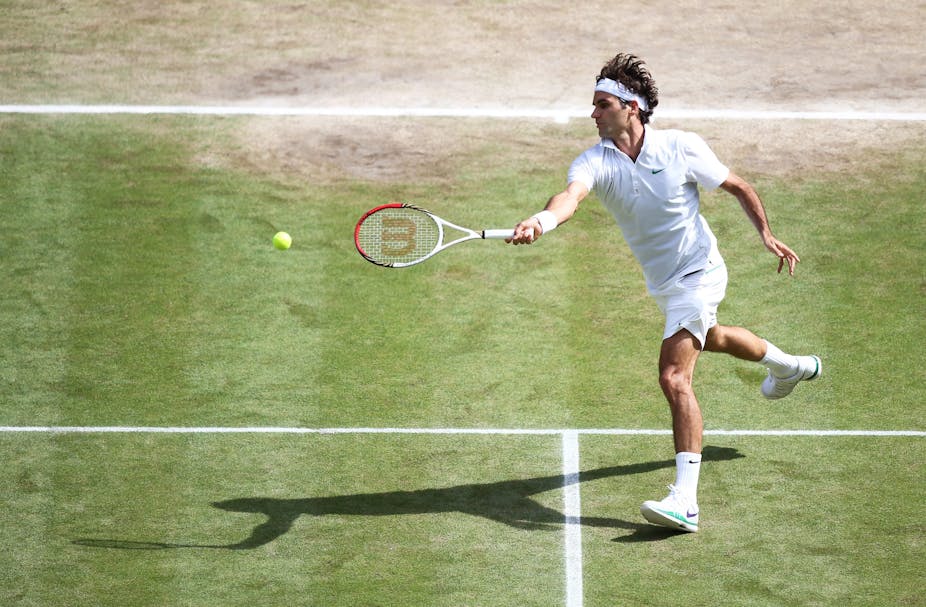Humans are fallible. Deciding who has won a tennis game or a sprint race can come down to a millimetre-accurate decision. So when an Olympic gold medal is on the line, it’s no wonder we turn to electronics to help us.
But can we really rely on Hawk-Eye, or some other electronic gadget?
Many sports are now using some kind of electronics to assist in the judgement calls of the officials. In essence, these judgement calls are made as to the position and speed of the players. If the players use a moving object, then it’s also the position and speed of that object. Most commonly, that’s a ball.
The position of the player or object is generally measured relative to a line, such as the finishing line of a foot race, or the baseline of a tennis court. These measurements generally need to be done in a split second, requiring expert judges, or the assistance of electronics. In “tight” cases, these judgements are often wrong – and clearly, we need them to be right.
Two outstanding examples are tennis and cricket.
I was at Wimbledon recently, and as I walked into the stadium, I heard the commentators say “Hawk-Eye has got it wrong again, twice, in rapid succession”.
Most of us who have watched tennis will have seen Hawk-Eye in action. It’s an outstanding example of a system that measures the bounce point of the ball relative to the global coordinates of the tennis court, and then tries to infer the position of that bounce point relative to the line.
This is called a “secondary” measurement, and has to be far more accurate than a “primary” measurement, where the bounce point is measured relative to the line itself.
The video below gives a good explanation of how the technology is employed in practice.
Let’s explore Hawk-Eye in the context of tennis and cricket. It gives us a lot of insight on how electronic judging is done in many other sports (thought it’s worth remembering all these sports have very contrasting requirements).
Hawk-Eye uses an area of modern technology called Computer Vision (CV). CV has been enabled by the huge rise in freely-available computing power and our ability to capture images electronically and rapidly.
CV is different to image processing. It uses captured images to infer information about the physical environment around us. It’s central to robotics and to road speed cameras.
The input in CV is an image and the output is information about what is observed. In the case of image processing, the input is an image and the output is another image.
In tennis, we don’t care where the player is, other than when serving, and then only his feet. But we really do care where the ball bounces relative to the lines on the court. In the case of cricket, what we really want to know is where the ball may go after it has bounced.
Hawk-Eye uses exactly the same technology to provide these two contrasting pieces of information about the travel of a ball. It uses very clever algorithms that I will describe later, but it has a very serious failing: it makes a “secondary” measurement.
This secondary measurement measures the flight of the ball relative to its global position in the playing area. In the case of tennis it’s trying to infer millimetre accuracy relative to a playing area that may be 50 metres in length. (In cricket, we are starting to use a technology called “hot-spot”).
This is a primary measurement and is never challenged. It measures where the ball has actually struck by measuring the rise in temperature caused by that collision.
In tennis, Hawk-Eye rapidly captures images of the ball during flight from multiple positions around the court. The cameras have to be very accurately positioned relative to the court lines and the overall court coordinates.
It then uses CV to locate the position of the ball relative to the court multiple times as it travels along its trajectory.
These captured positions are not precise. The ball is a tube-like blur and there’s crowd movement and noise in the background.
These ball location estimates are then combined with the ball ballistics to provide a maximum likelihood estimate of what the ball trajectory may have been. The equation is then used to draw a graphic of the ball’s travel, and infer a bounce point.
It would be a tall order to get it right all the time. Some estimates suggest that Hawk-Eye only gets it right in tennis 60% of the time.
In summary, electronic judging tries to do a good job of reducing the uncertainty of human observation in sport. Mostly it “gets it right” - more often than humans do - but there are no absolutes.
What it definitely does do is add enormously to the entertainment value of sport, and particularly for those of us who watch it on television.

